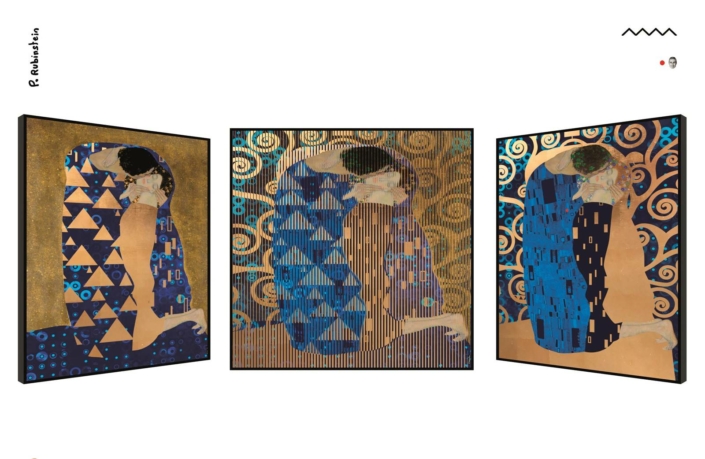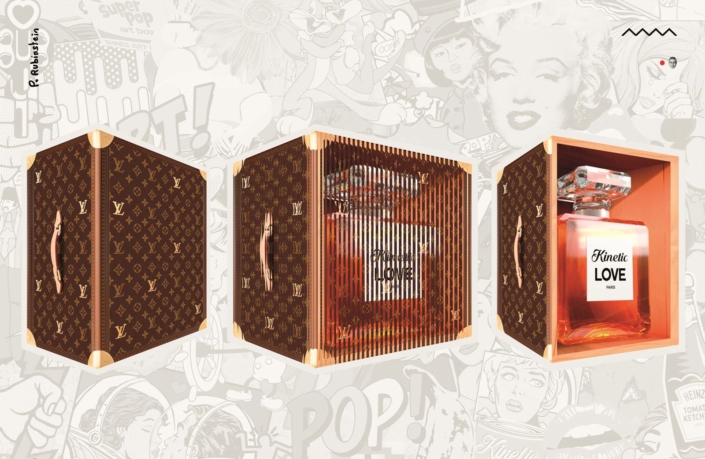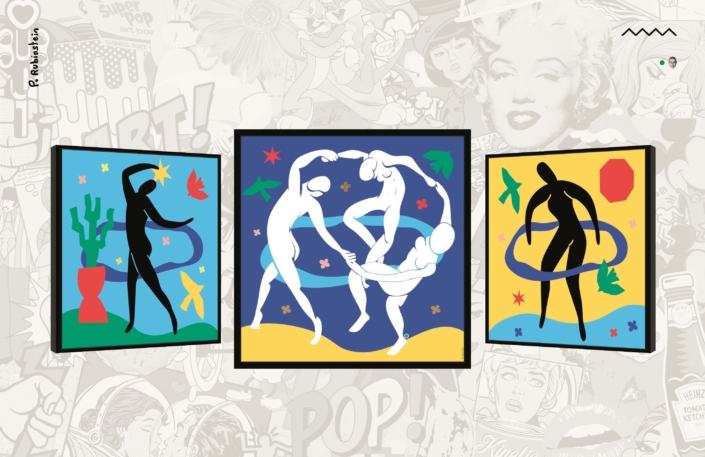His artistic process is based on an innovative process of lamellar assembly on a pyramidal support. He cuts two images into lamellae, which he fixes on a pyramid structure and then makes an accordion folding to give birth to relief works.
From the front, these creations present a double image, where the two photos overlap, but when viewed from different angles, the illusion is striking: only one of the two images appears. Thus, his three-dimensional concept «Dooble» is born.
He designs a second process called «Triple» which consists of three images, one central and two lateral. Side views are created by lamellae inserted at the perpendicular of the center image. They offer two distinct images, on both sides at 45°. This technique allows a variation of perception by the movement and ensures an obvious vision of the central image.
With these two techniques he fully involves the viewer in his creative process. His three-perspective paintings offer a captivating visual experience, inviting the viewer to move around the work and explore all its facets. Thus his participation becomes essential to the perception of the picture, fully engaging his experience.
The artist, in a perpetual quest for exploration, experimented tirelessly with forms, colors, materials and movement, pushing even his limits to sculpture. His artistic freedom allows him to explore new horizons while remaining faithful to the essence of kinetics, thus offering his audience always surprising artistic experiences.
Gold the great protagonist
Gold occupies a prominent place in the artist’s artistic explorations. Carrying a strong symbolic load, he is the main protagonist of his work. The yellow metal sublimates his paintings, bringing an exceptional brightness and a new kinetic vocation by creating new optical effects. Thanks to the gold leaf, the perception of the works changes according to the light intensity, its variation and its orientation. This phenomenon completes the kinetics in the change of perception of the work.
Recognition
At 18, he sells his first works. But it was only years later that the artist perfected his technique and artistic language to offer today a work internationally recognized.
His works are represented in many galleries around the world as well as in different museums: POPA (Porrentruy Optical Art, Switzerland), La Maurice and Paul Marciano Foundation Los Angeles and the Copelouzos Museum of Art in Athens.





